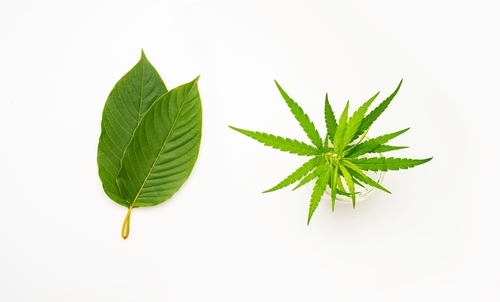Cannabidiol and Kratom have been rising in popularity, and it’s gotten to a point where it’s natural for people to start comparing the two in terms of benefits. Hemp CBD is widely discussed in the sphere of naturopathy for quite some time now, mainly as a viable alternative medicine for treating numerous health conditions.
Other plants too have entered the fray thanks to their own sets of therapeutic effects, and kratom is one of them. In this post, we’re going to look at how it compares to cannabidiol, and the claim that it happens to be an effective alternative for the latter. There are seemingly many things the two have in common, but once you dig deeper, differences crop up as well.
Cannabidiol – The Basics
Hemp CBD is sold as part of a wide range of goods such as oils, gummies, drinks, food items, and topical products. CBD is non-habit forming while also being non-psychotropic, and offers many varied health benefits. The main purpose it’s used for is to achieve internal bodily balance through its interaction with the endocannabinoid system.
CBD being well-known among users owes to the fact that it completely lacks mind-altering effects, unlike its more popular cousin compound THC. Cannabidiol is capable of making you feel better, helping you cope with pain, managing anxiety, etc, all without the problem of psychoactive effects.
CBD has shown promise in the area of treating even severe health issues such as cancer. Further research is ongoing, and an increasing number of professionals practicing conventional medicine are starting to advocate CBD use.
Kratom – What You Should Know
Mitragyna speciosa, known commonly as kratom, is a plant that natively grows in Southeast Asia. It is found in regions like Papua New Guinea, Malaysia, Thailand, and Indonesia. People inhabiting these places have been consuming it for years, conventionally chewing the leaves of the plant for stimulant effects.
Kratom is historically known for being consumed alternatively to opium, and is now trending as something that can be used for recreational medication.
The two major compounds found in this plant are mitragenie and 7-Hydroxymitragynine. These components present inside the herb intermingle with the body’s opioid receptors and cause the effects which kratom is famous for. Mitragenie is what brings about the therapeutic properties that many people are looking for these days, while the psychotropic effects can be attributed to 7-Hydroxymitragynine. Even today there is only scant research that has been done into kratom, due to which it’s not quite as popular as CBD.
Kratom v Cannabidiol: Applications
The consumption of cannabidiol is something a lot of people undertake for numerous purposes, which explains why the list of known benefits is a long one. This hemp derivative can be taken to manage anxiety, sleep issues, long-term pain, and inflammation.
For the most part, partakers consume CBD for the express purpose of managing stress-associated symptoms and to help them relax; that said, CBD is now also gaining traction among fitness buffs. Athletes in particular swear by the way it helps them deal with pain, not to mention the way it speeds up recovery from exercise-related injuries. These practical applications aside, cannabidiol is being studied for the possibilities it may offer in treatment of serious health conditions like multiple sclerosis, cancer, epilepsy, diabetes, and heart disease.
CBD is non-habit forming, and is seemingly safe even after being consumed in high dosages. Kratom, on the other hand, carries the problem of potential addiction, as well as many potential side effects.
Kratom consumption is mainly aimed at easing pain, alleviating anxiety, and managing opiate dependence. What research has been done into this substance so far seems in the fledgling stage, which rules out drawing a solid conclusion. Going by anecdotes which include accounts of early consumers, some of the claimed benefits are in fact existent. Even so, there needs to be further research on the table before considering this plant a viable treatment option.
Kratom v Cannabidiol: Side Effects
Cannabidiol is famous for having only minimal side effects. Evidence is already out there that it causes no addiction, and that it can be taken in high dosages without causing harm to the user. There has been no documented death through cannabidiol use, and the only side effects to consuming this compound are mild ones, like nausea, dry mouth, and tiredness.
Kratom’s side effects, though, make it less attractive as an option for health and wellbeing. There are those that claim it can solve opiate dependence, but since it causes addiction as well, that would be a matter of trading one evil for another. No medical professional would recommend kratom’s frequent use, since addiction turns likelier the more you use it.
Some of the common side effects of using kratom are nausea, constipation, and vomiting. Even more serious symptoms include liver toxicity, seizures, increased hypertension and depression. Taken overall, kratom has more unappealing/dangerous effects than benefits.

